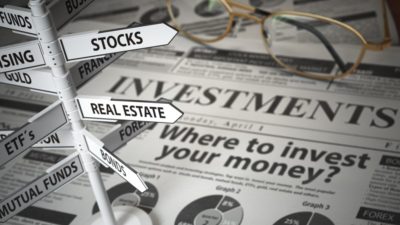There are a variety of reasons as to why someone might hit 40 and not have any money saved in the bank. Having an income might not be enough in itself after expenses to save or invest funds. Yet with some tweaking, I believe that not only can money be set aside for investing, but using the right strategy can help to generate a separate second income.
Finding the financial room to invest
At the risk of making things sound overly simple, there are three ways to find the money to invest. One way is to cut back on unnecessary spending. This keeps income the same but reduces costs, leaving a net surplus each month.
A second way is to focus efforts on earning more, even if costs stay the same. This could be from doing overtime, getting a promotion, or even switching jobs.
Finally, it’s possible that a life event occurs that provides a lump sum of cash. This could be anything from getting a work bonus, to inheriting money from a family member.
Ultimately, even with no savings, any of the above three changes can mean that each month a surplus can be left over that can be used to invest in the stock market.
The method I’d use to generate income
The way I’d focus on is investing in dividend paying stocks that also operate in a growing sector. The aim would be to pick up the dividends as income, but also have the benefit of share price gains in years to come.
The dividends allow a second income to be had, almost from day one. Yet the compounding of share price gains means that further down the line I could trim some profits and bank a further lump sum.
Let’s say I put away £250 each month, but don’t reinvest the dividends and just use it as a second income. In a decade’s time, I’d be receiving £1,800 a year (using an average dividend yield of 6%). On top of that, I could have an investment pot worth £39.2k, assuming a further 6% annual share price increase.
Naturally, a risk is that when forecasting that far into the future, it’s hard to predict with certainty.
One stock that fits and one that doesn’t
It’s key that I focus on the right areas here. For example, I probably wouldn’t favour Imperial Brands given the state of the tobacco sector. Even with the likes of vaping products on the rise, I don’t know how successful this company will be in the next decade. The dividend yield is currently 8.16%, which is very attractive. This is a risk to my strategy, in that I might forego higher yielding options in the short term in order to position myself well for the long term.
As an example that I’d look to buy for this method, IG Group comes to mind. The retail trading platform is going from strength to strength, with last year seeing record revenue and profit before tax. The dividend yield is 6.69%. It’s still very healthy, but with the added upside of potential share price gains in the future.








